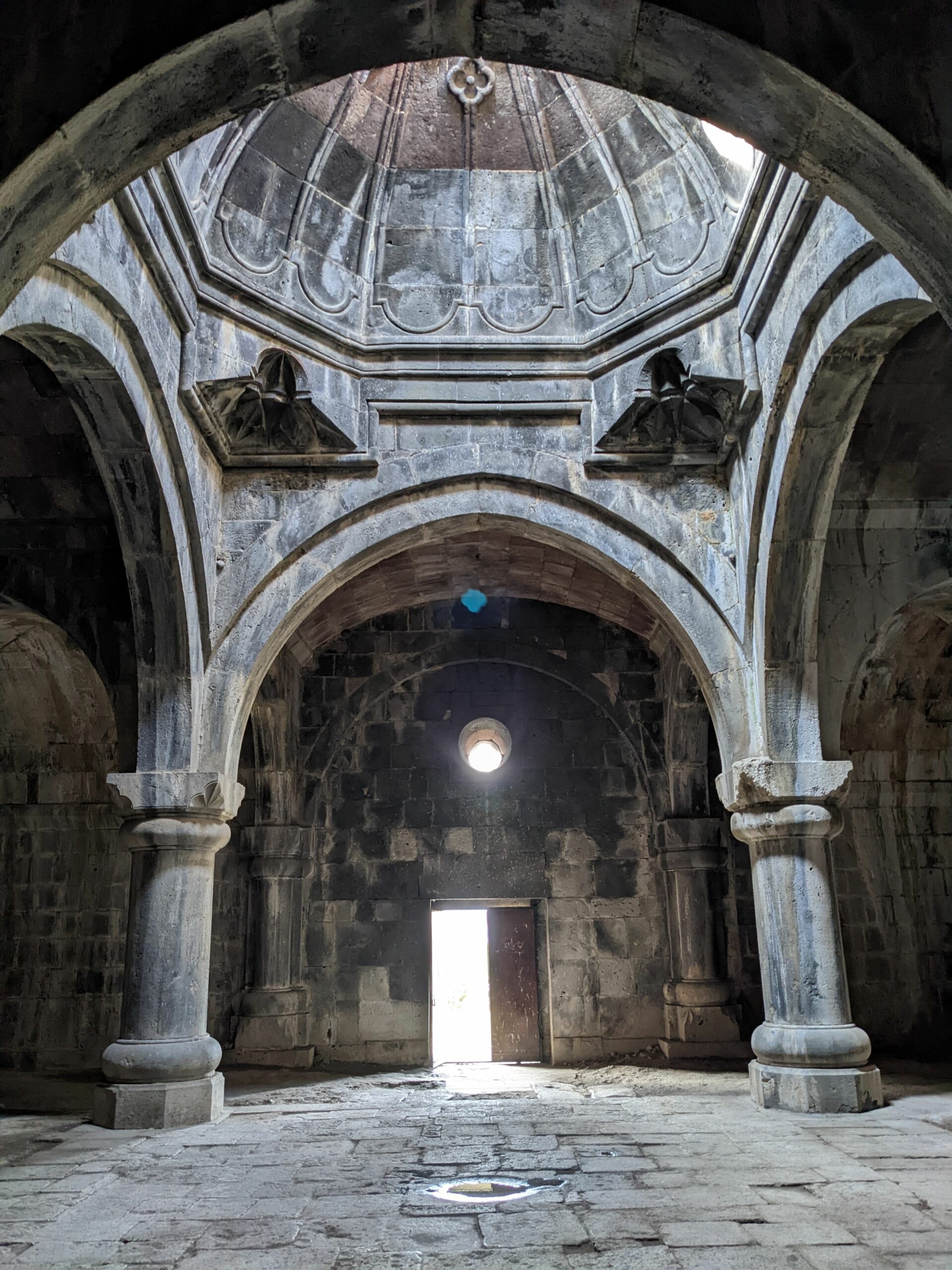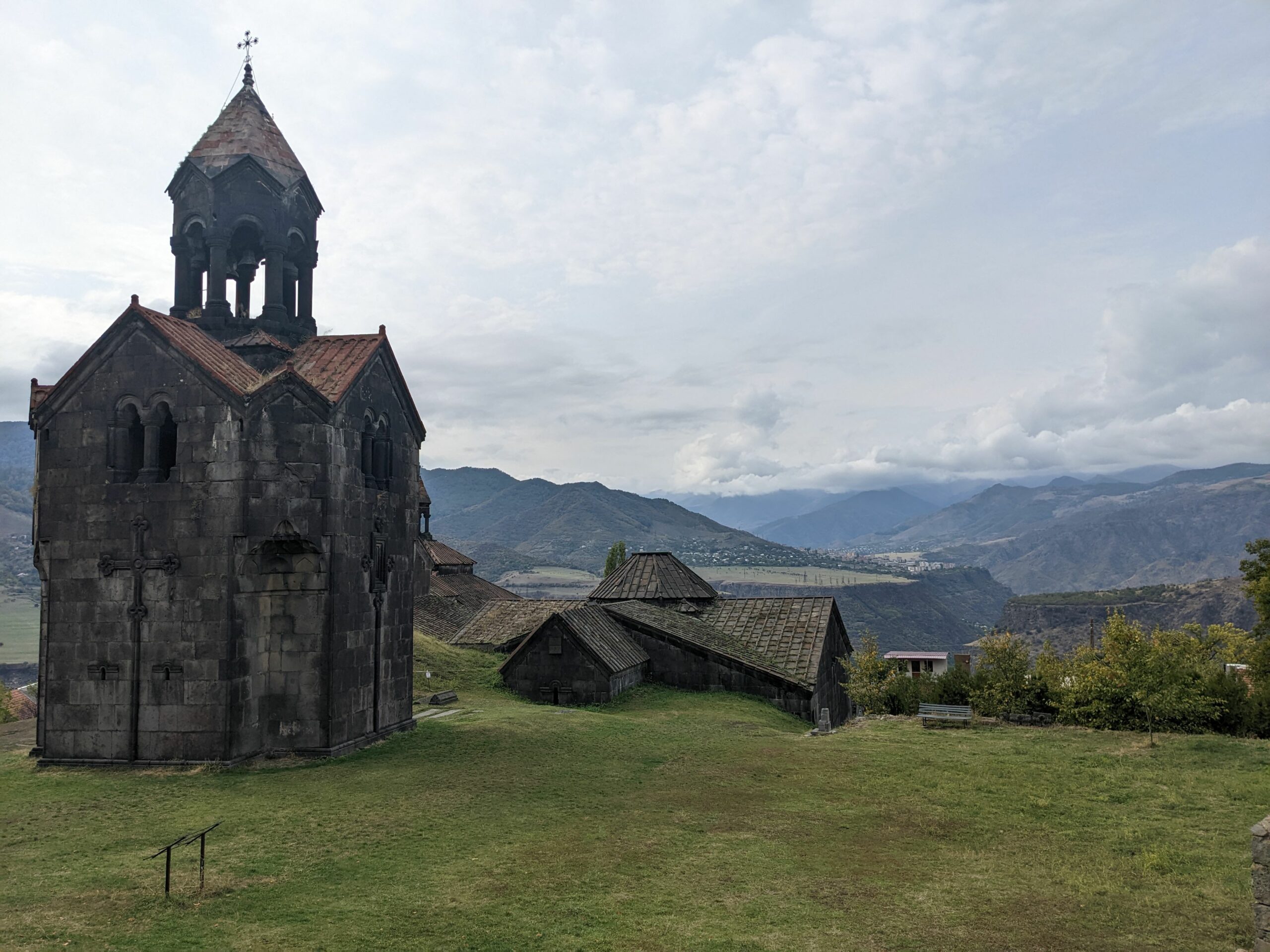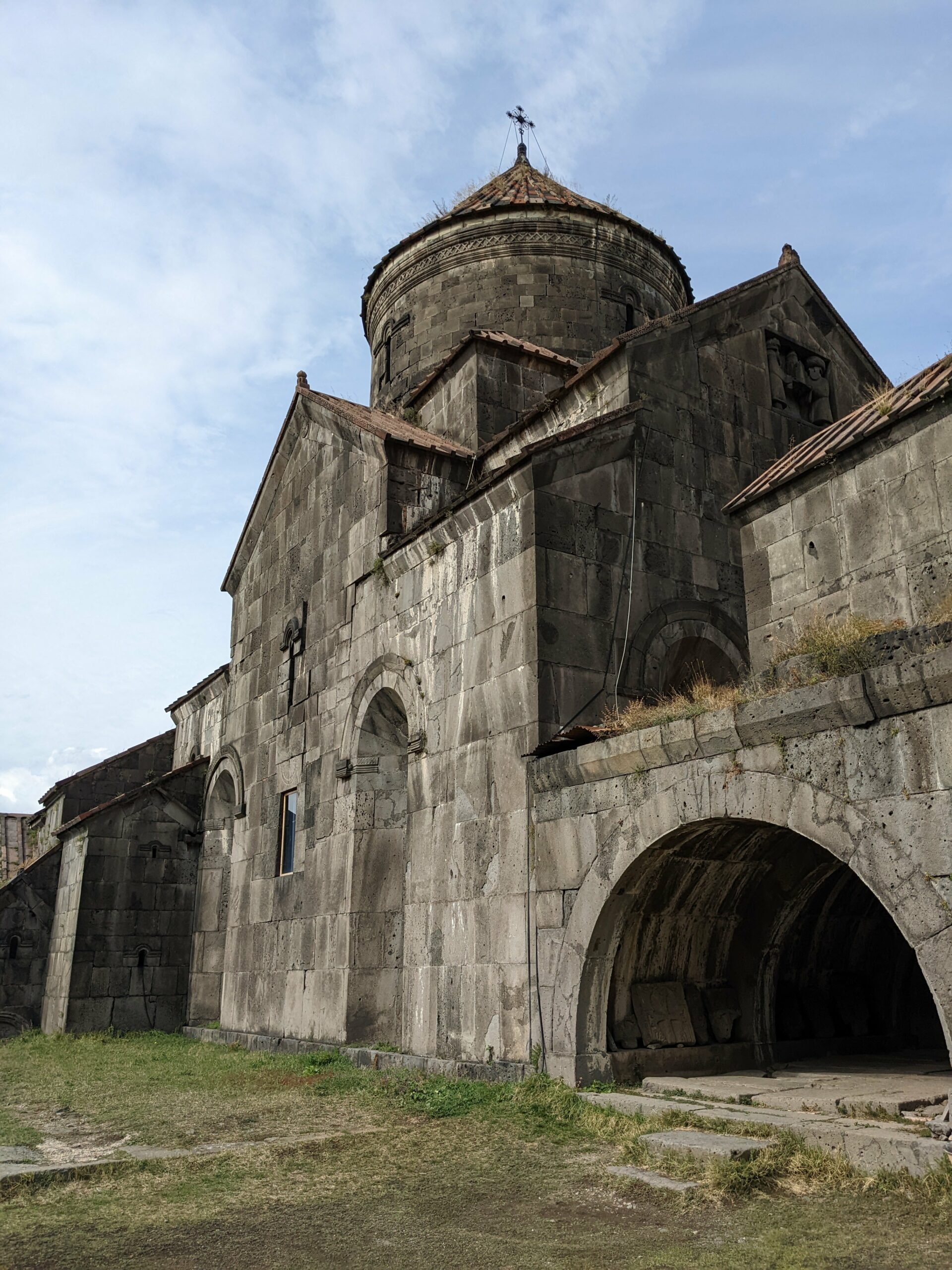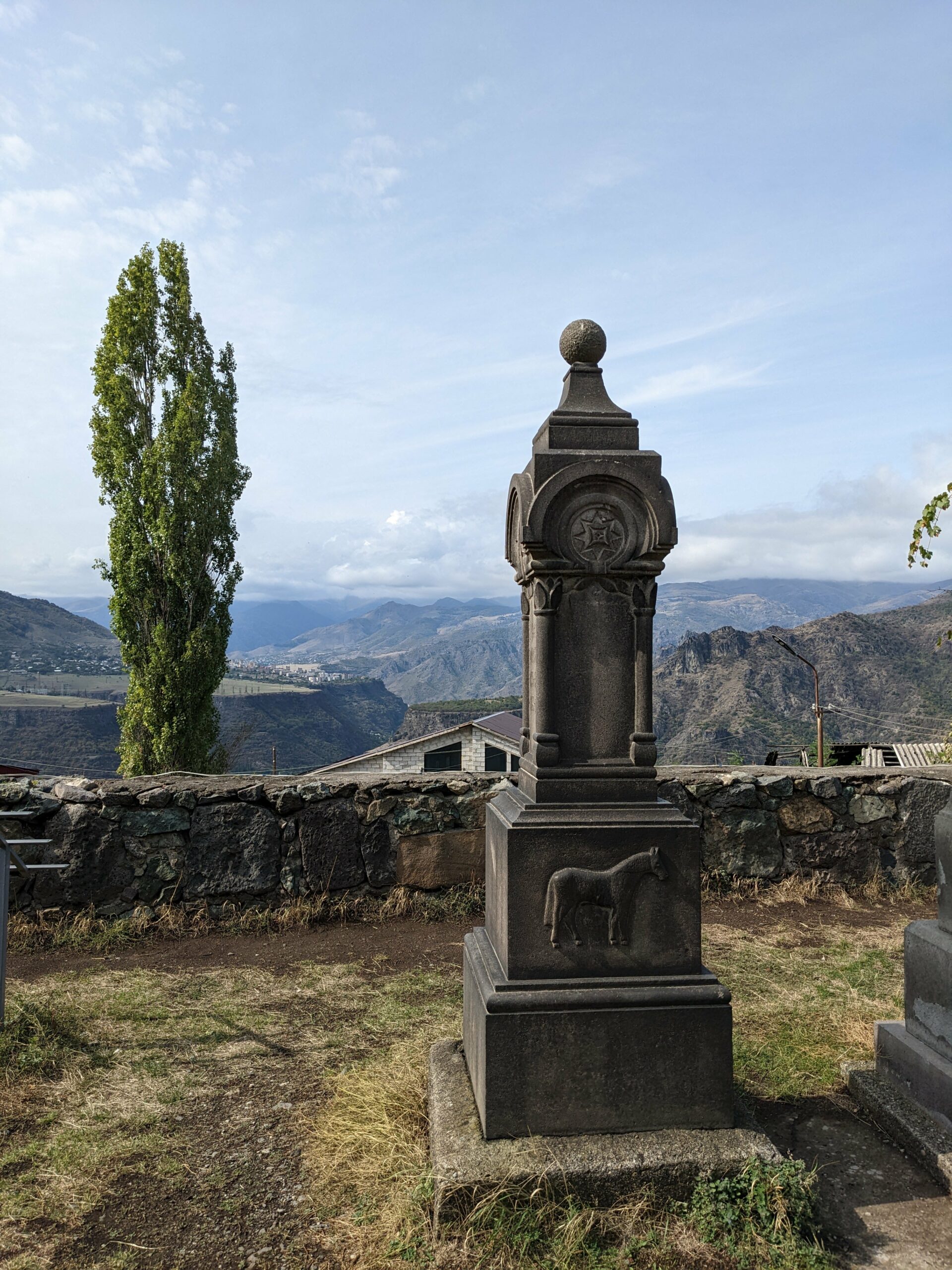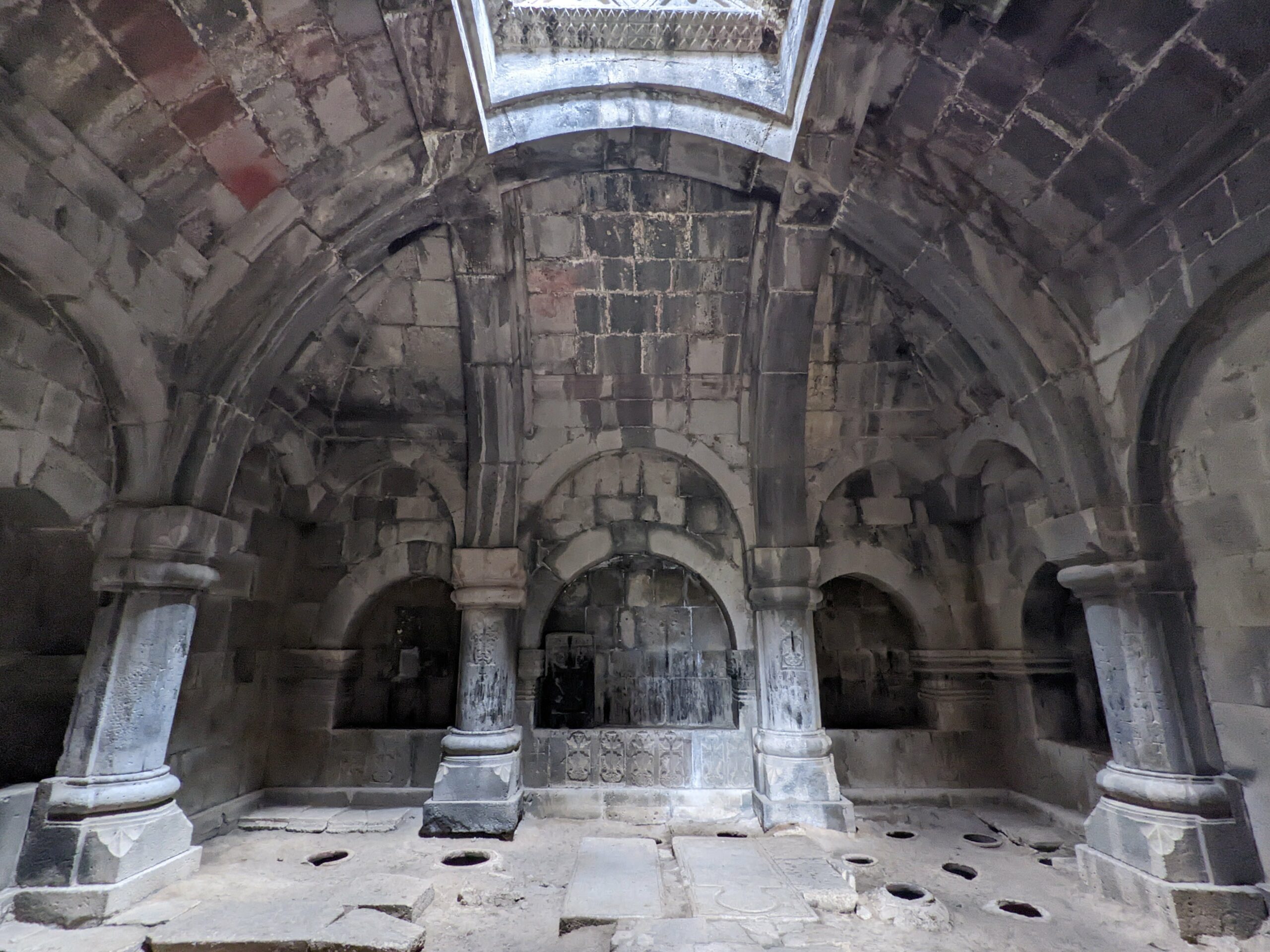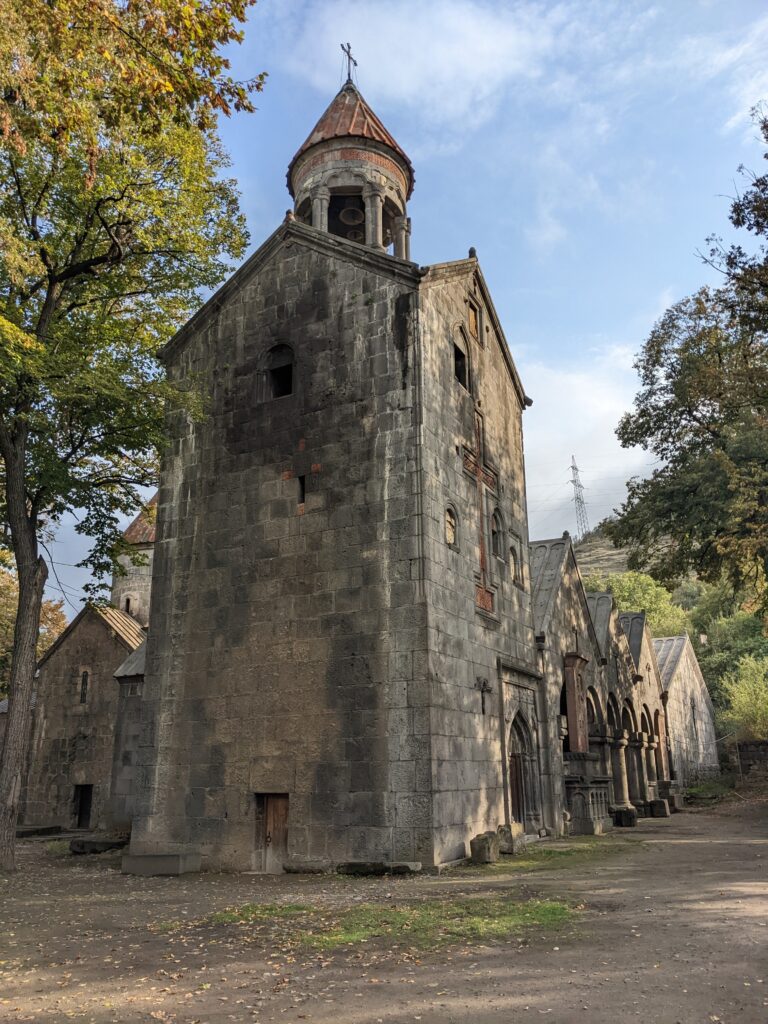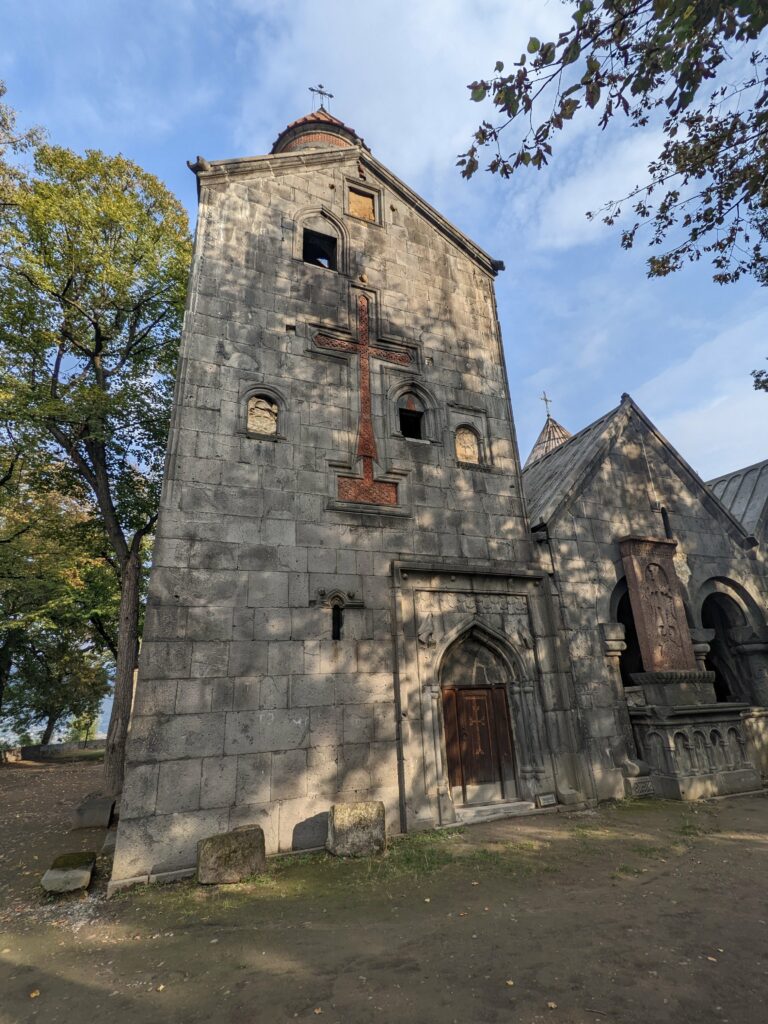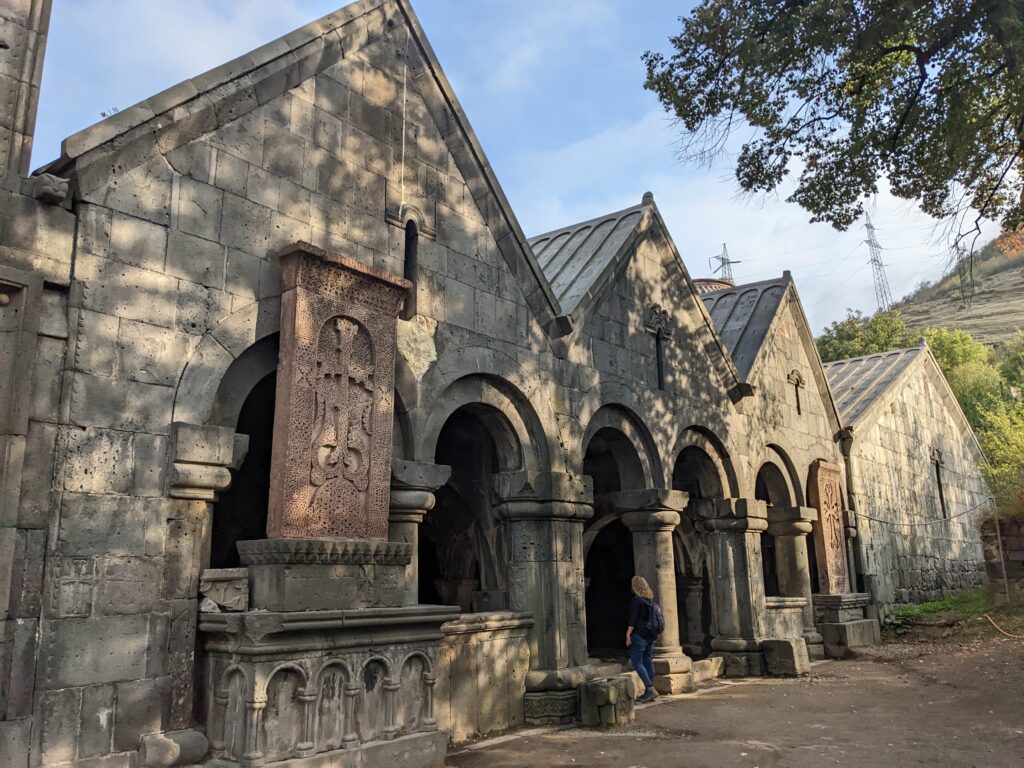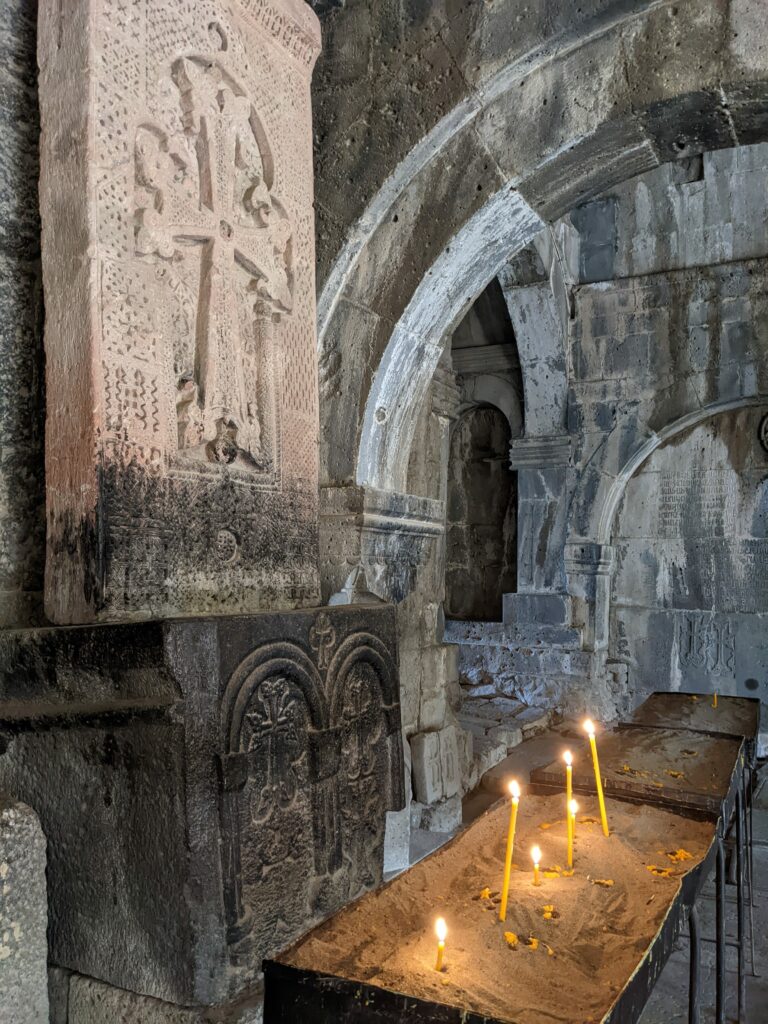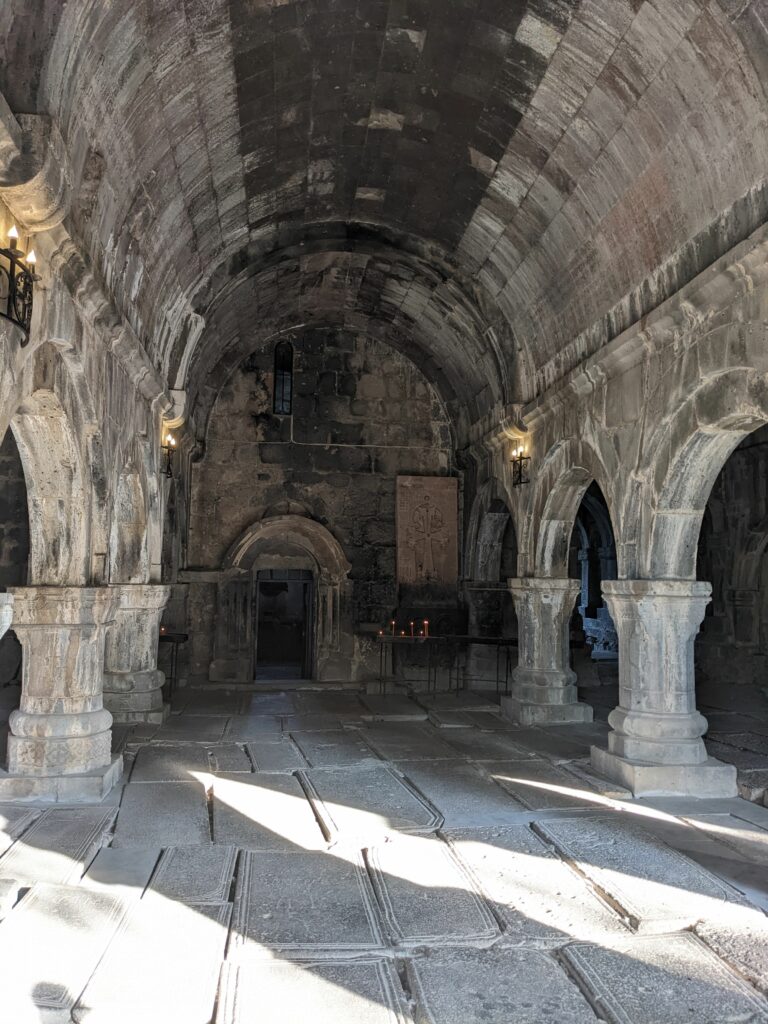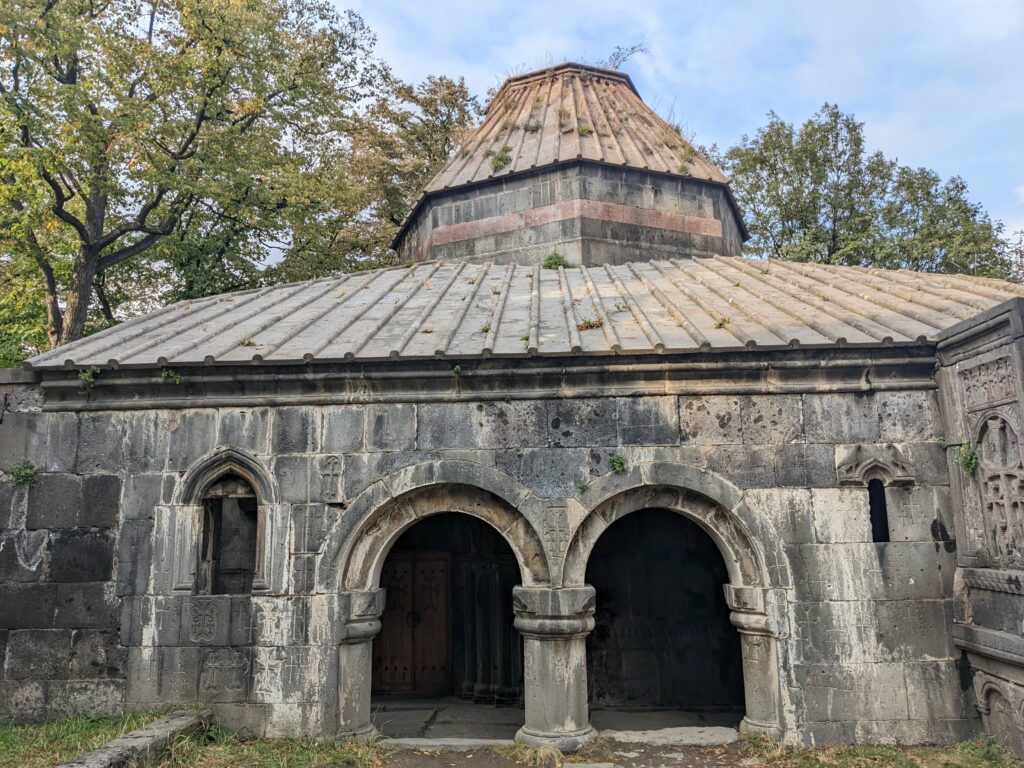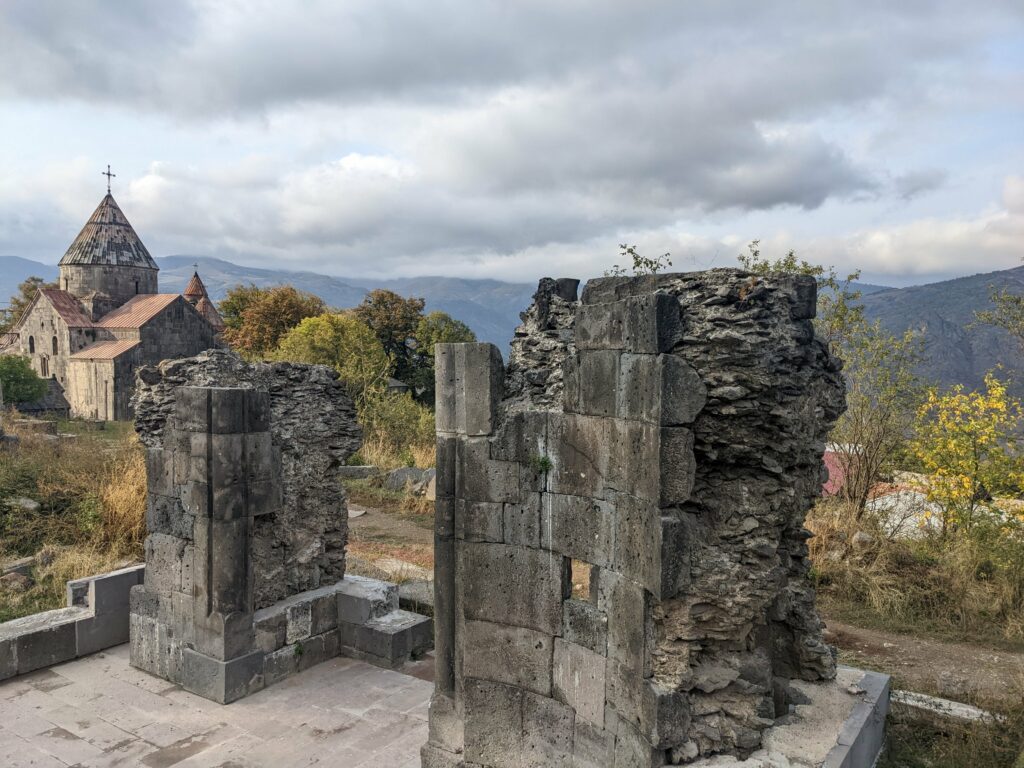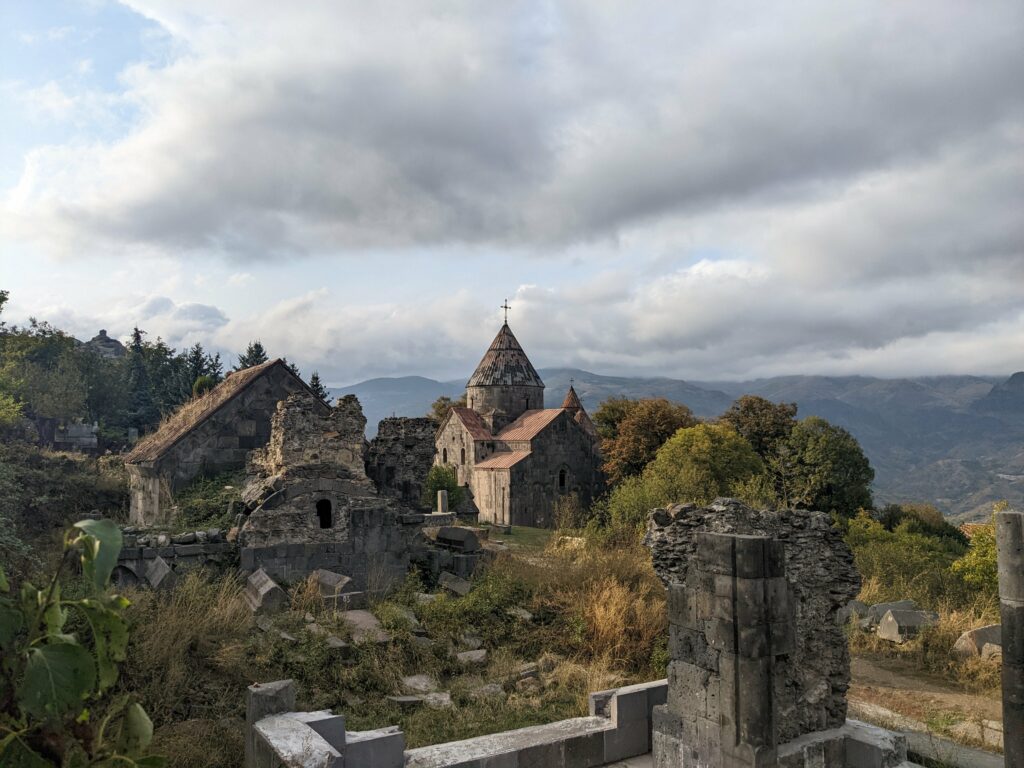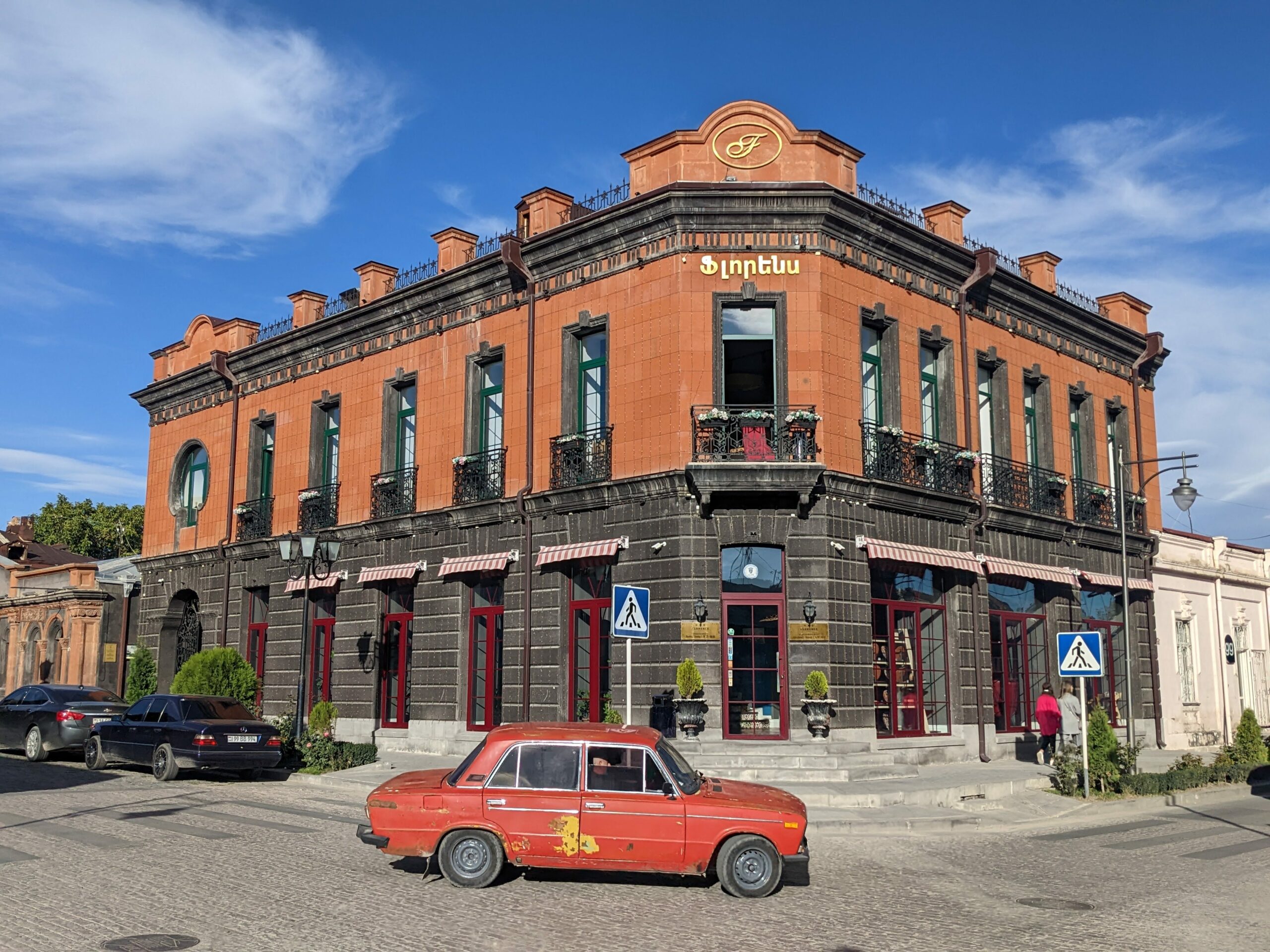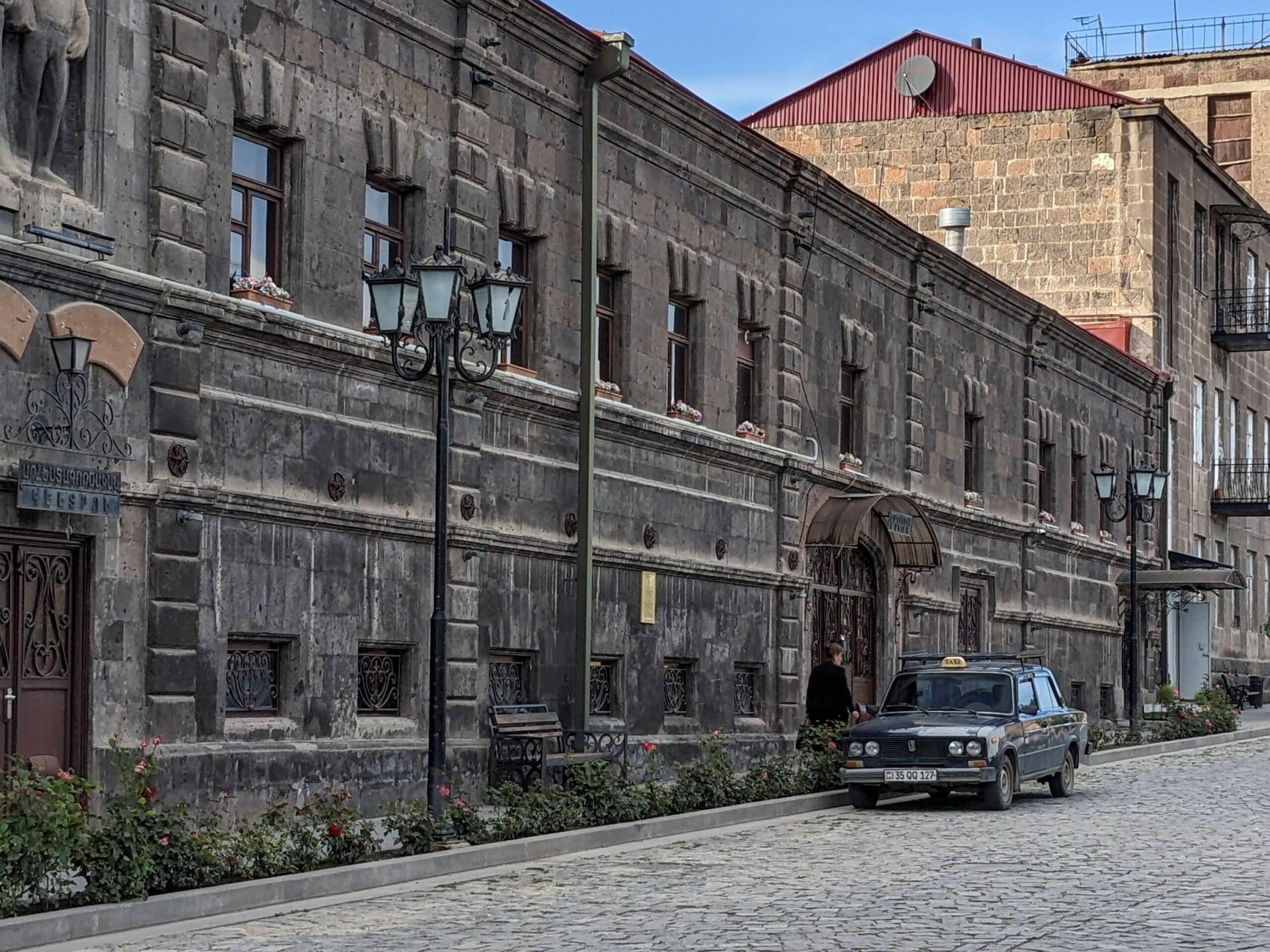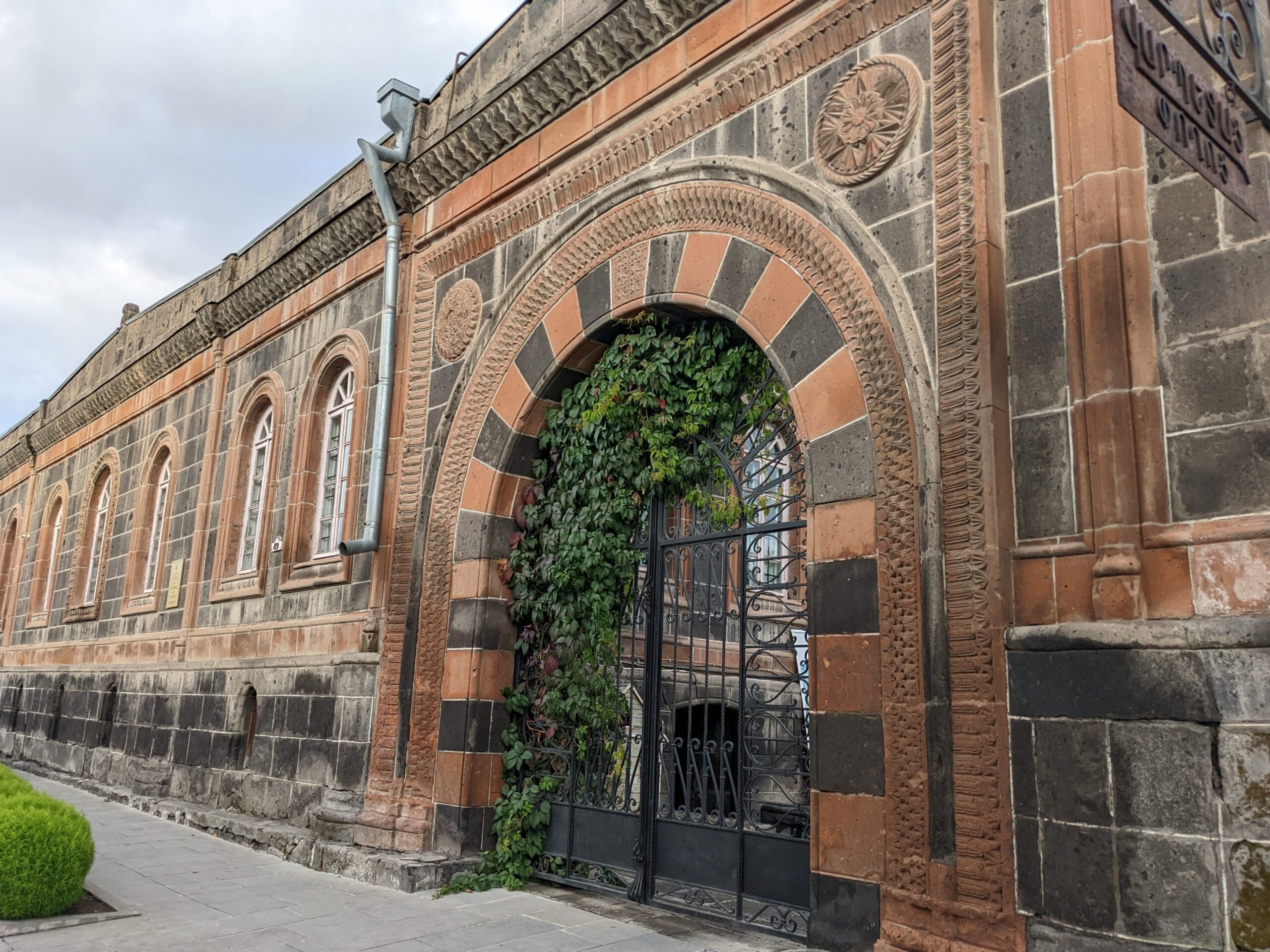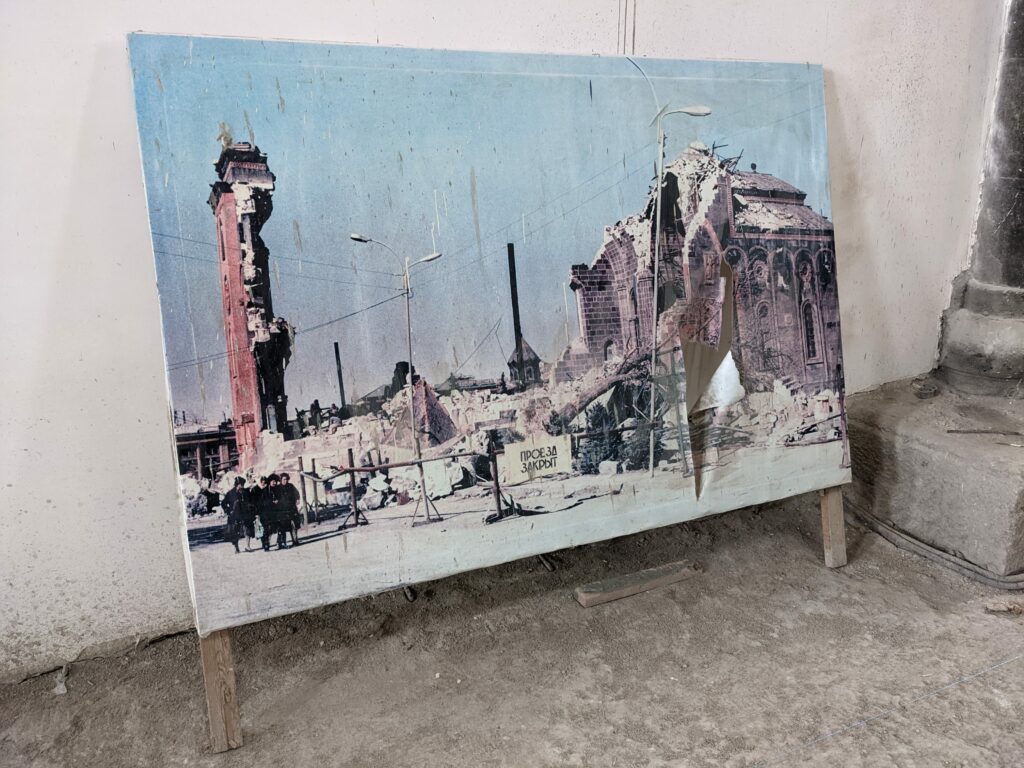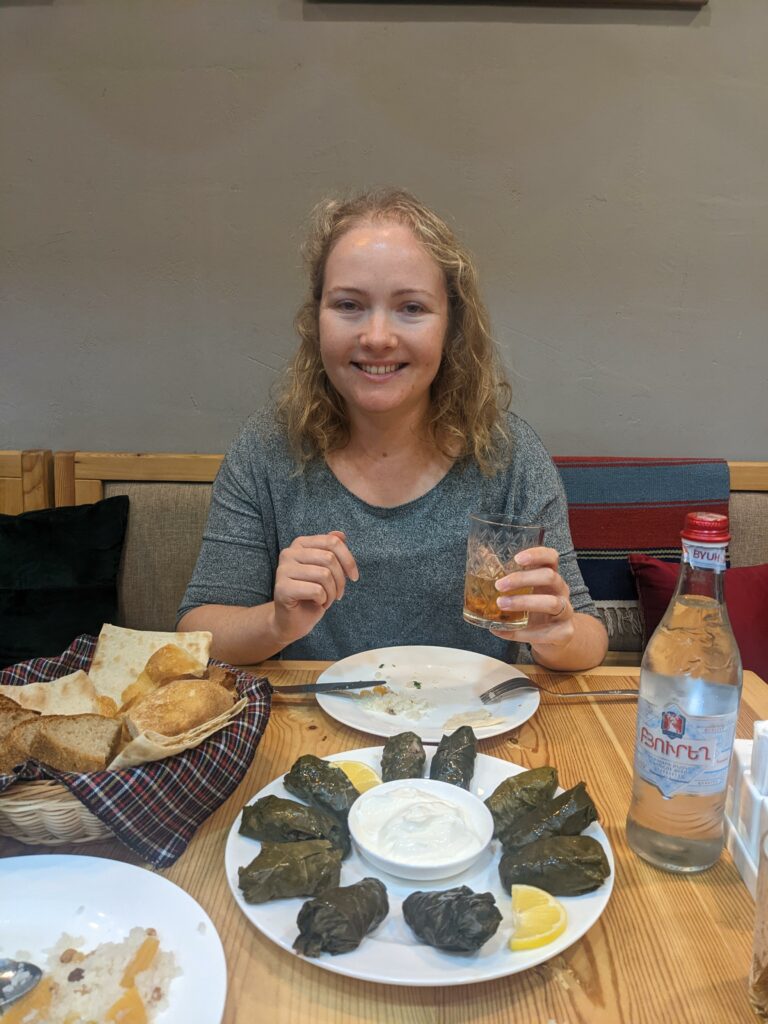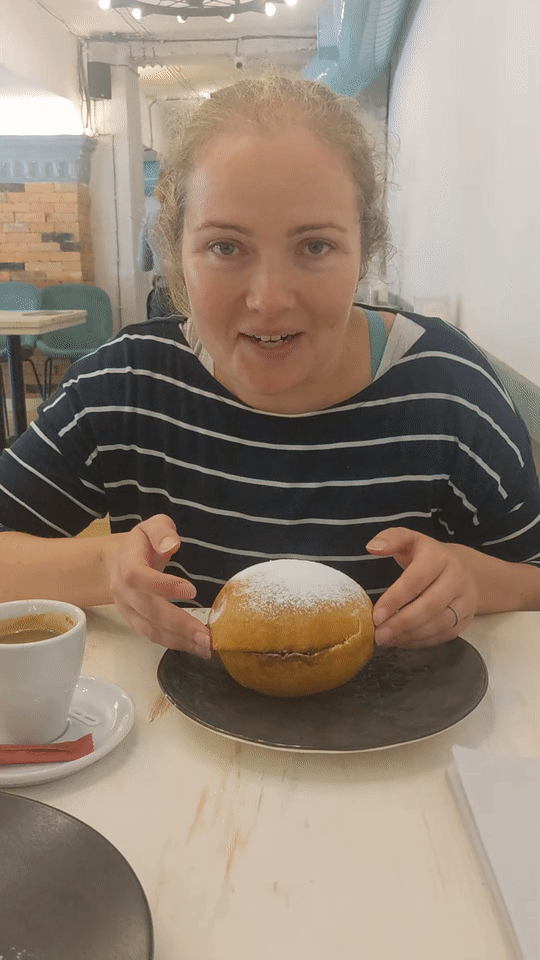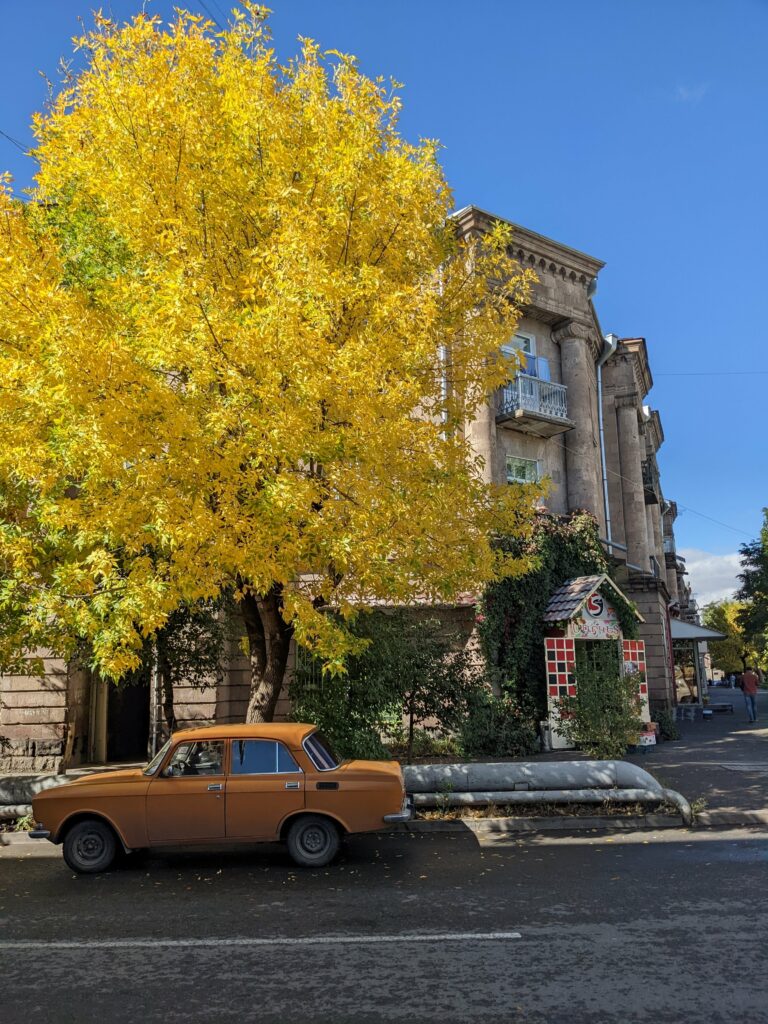They said it couldn’t be done. They were wrong – it just shouldn’t be done!
Of course, we’re talking about visiting the Debed Canyon (along with the UNESCO World Heritage Sanahin and Haghpat monasteries) in a day by public transport. With the barest idea of transportation timetables, we set off optimistically from the bus station in the industrial city of Vanadzor immediately after breakfast.



We had an early set back when we failed to negotiate breakfast in our guesthouse any earlier than 9am (I’m not sure what the lady said in Armenian, but I think it roughly translated to, “Impossible! There’s no way I’m getting up any earlier”), but we still managed to make the 10am bus by the skin on our teeth. Slightly embarrassingly, we displaced two people from their seats in the full marshrutka – we think this is because we were travelling further, but who really knows. We haven’t quite got to grips with the etiquette but no one seemed to mind or want to take us up on our offers of seats, so we sat down and enjoyed our front-row view of the extensively cracked windscreen.
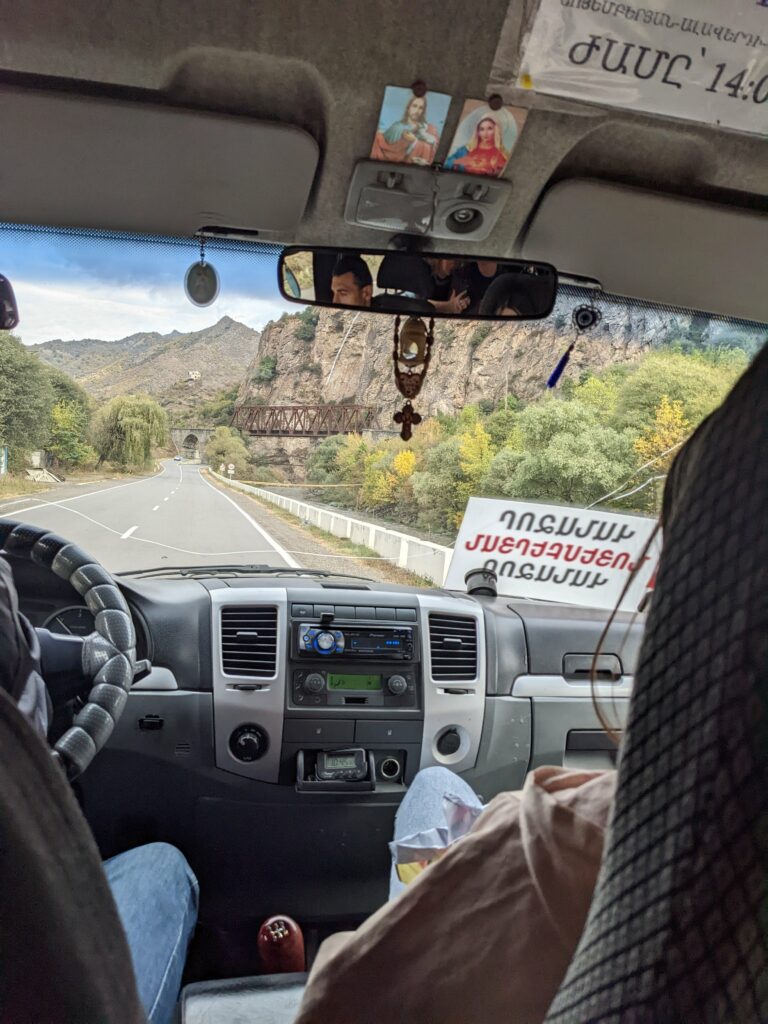
We arrived in Alaverdi after a spectacular drive through the Debed Canyon and briefly explored the town on foot. Our later antics proved this rather unnecessary as we got to know Alaverdi intimately. The town is the site of a disused copper factory and sadly defunct cable car (used to transport workers to the factory), which combined with the rugged landscape, gave it a bit of a wild west feel.
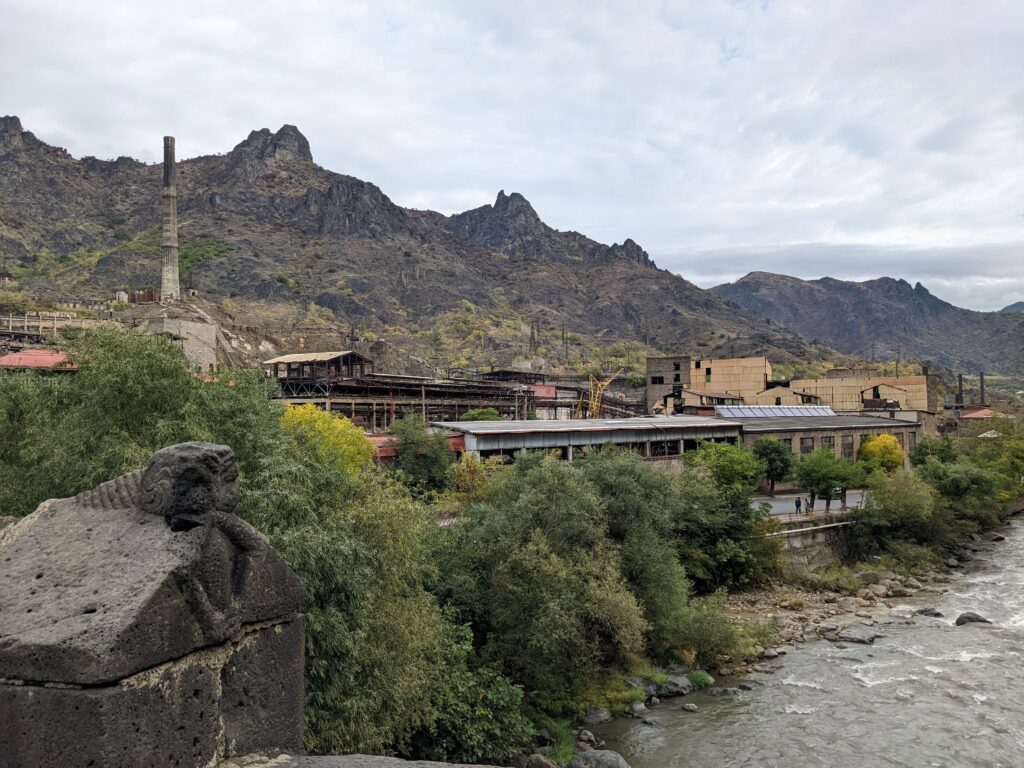
We stopped at Sanahin Old Bridge, built in medieval times. It was apparently used by vehicles until the 1980s, but I have no idea how, since it was seriously steep! Legend says that when a real man crosses the bridge, the stone lions that guard it will come to life. Since they were so weathered that they didn’t even look like lions any more, it’s understandable that they didn’t notice Oli crossing the bridge.


When we returned to the town centre, we spotted a marshrutka headed for Haghpat Monastery and smugly jumped on board. Surely this was our most difficult transport connection of the day nailed, since it would take us to the further of the two monasteries, in a village up a mountain around 10 km away.
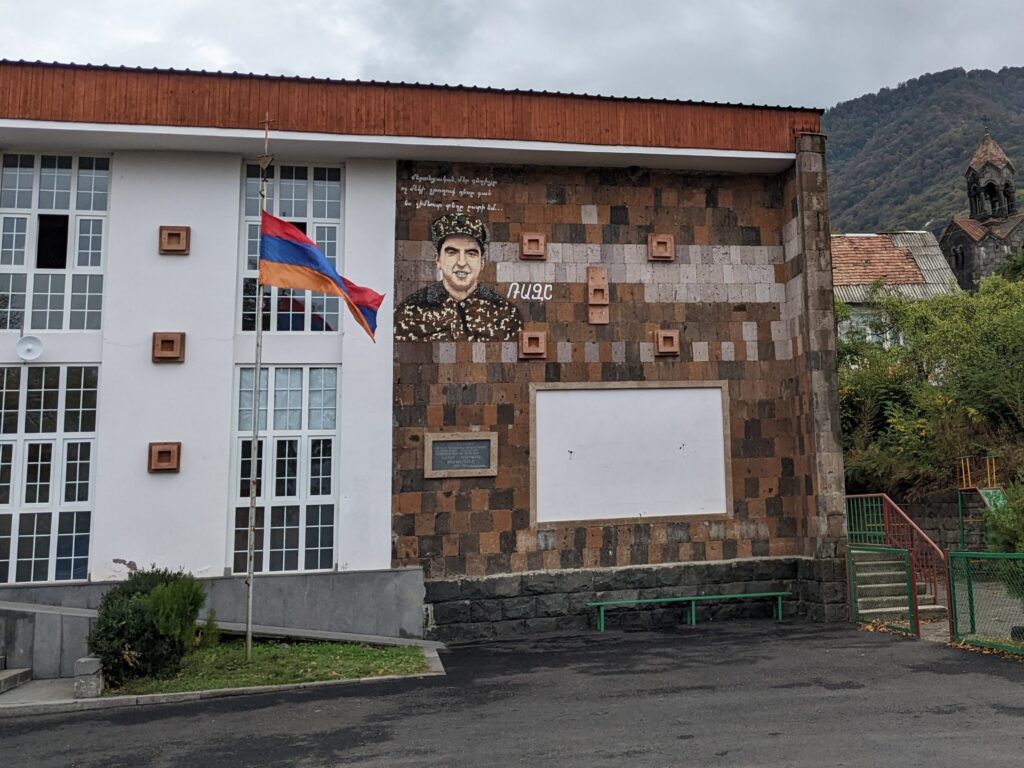
We spent about an hour exploring the monastery complex and admiring the views. Given that this is one of Armenia’s better known attractions, it felt like a real treat to explore it with so few other people around.
When we emerged, we found that we’d just missed the 1pm marshrukta back to Alerverdi, and had an hour to kill until the next one. We picked up some fresh bread for lunch and fed it straight to the local dogs because they asked so very politely.
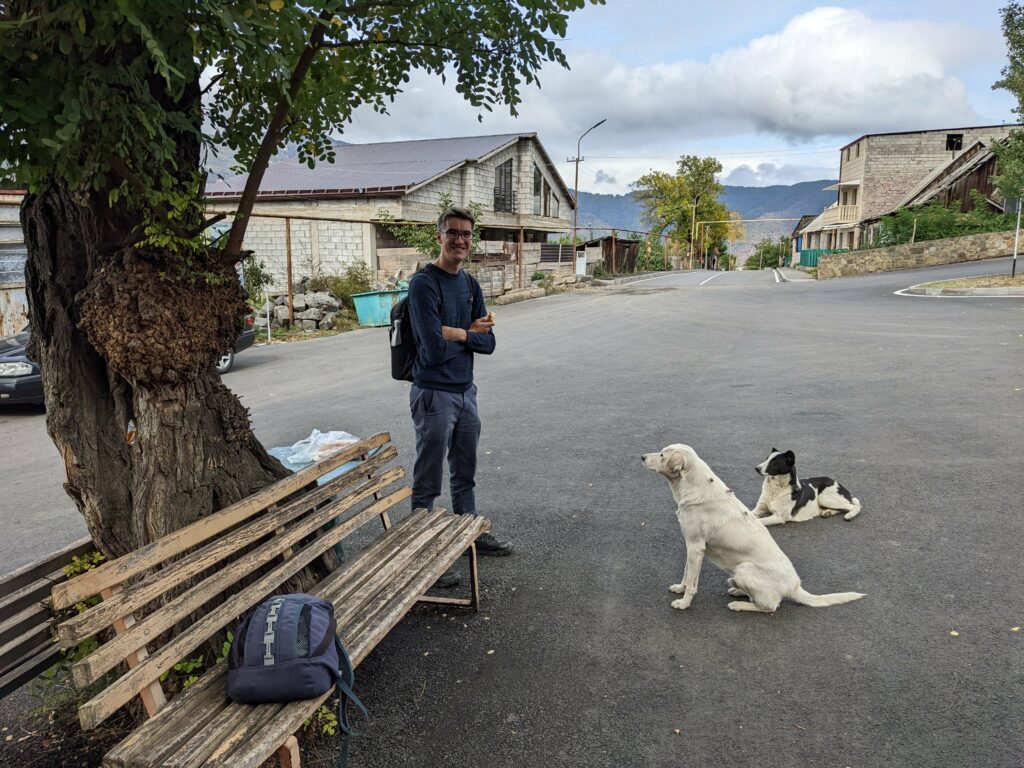
We re-explored the monastery, finding a refectory hidden away that we were sure wasn’t there before, and also explored more of the village including a cemetery with a spectacular view across the valley.


Eventually, we caught the marshrukta back to Alerverdi, feeling pretty happy about our progress so far. At this point, things started to unravel. After a long wait (and with the help of several other people at the bus stop), we got on a marshrutka that took us to Sanahin, which was crucially in an entirely different direction to Sanahin Monastery. At the end of the line, we owned up to our mistake to our marshrutka driver, and Oli had a conversation with him consisting entirely of them both holding up three fingers at each other multiple times and doing lots of nodding. We weren’t at all sure whether we were catching the number 3 or whether something was happening at 3.30, but it was clear that the driver had a plan for us. We re-boarded the same marshrutka and began the journey back to Alaverdi (for the third time).
By this point, we’d had our fill of touring Alaverdi and were ready to hop off and find a marshrutka back to Vanadzor (since we’d read they stopped fairly early in the day). Unfortunately, explaining this to our very helpful marshrutka driver was well beyond what Oli could communicate in hand gestures and the driver was determined to keep us on board, so we shut up and followed his instructions! We completed another pass through Alaverdi and back out the other side, before he put us in the care of another passenger who was also changing bus, and she shepherded us on board in case we tried to do another runner.
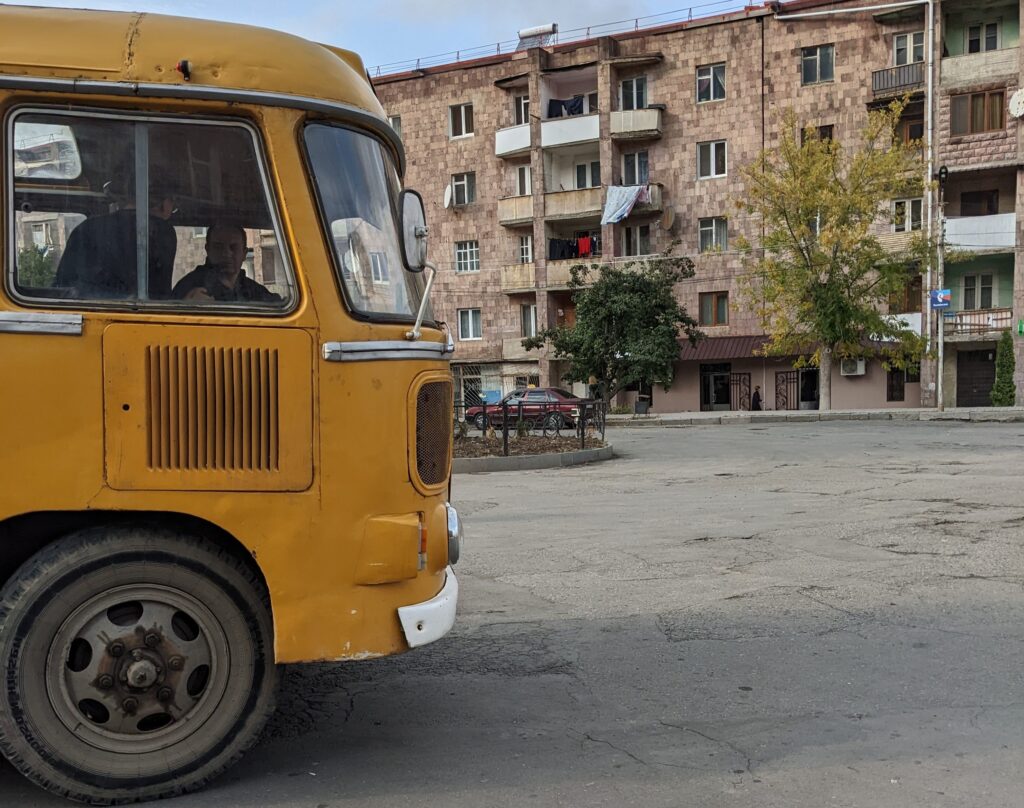
It turned out that bus number 3 was an ancient yellow bus – surely one of the oldest vehicles I’ve ever travelled on. Departing bang on 3.30, it chugged its way back through Alaverdi (our fourth visit) and then wheezed up the steep hill to Sarahart, where the monastry was located. I’ve never heard a vehicle struggle quite so much on a hill, but we made it at length. It was at least a refreshing change from some of the wild rides we’ve had on other vehicles!
By this point, it was pretty late in the day to be finding public transportation back to Vanadzor, so we set ourselves the target of catching the next bus back to Alaverdi to give ourselves the best chance. We all but ran the kilometre uphill to the monastery, and as we arrived Oli announced that we had seven minutes to explore. Seven minutes?! It was a massive place! We panted from room to room and building to building. It was much bigger and more impressive than Haghpat Monastery, but unfortunately my main thought was how little time we had and how much I needed a wee!
On the way back to the bus, Oli managed to run ahead and got a picture of the MiG aircraft that is kept at the nearby Mikoyan Brothers Museum. It wasn’t quite the relaxed museum visit I’d hoped for, but there was NO TIME! We made it back to the bus in the nick of time, red faced, sweaty and panting loudly, to curious stares from fellow passengers, and bounced back down the hill for our fifth and final visit to Alaverdi.
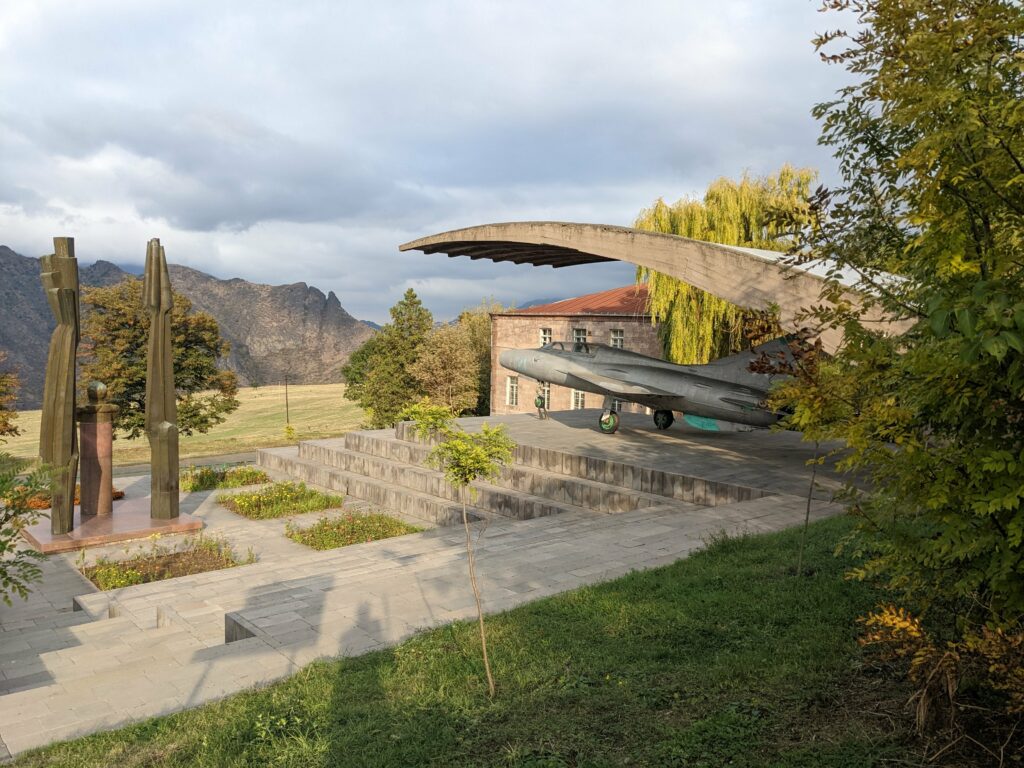
We eventually found a marshrutka back to Vanadzor (thankfully, they ran much later than we’d read) and laughed the whole way back to Vanadzor about our piss poor planning. If you’re ever thinking of a similar trip, may I suggest spending less than two hours at Haghpat Monastery and more than seven minutes at Sanahin Monastery?!
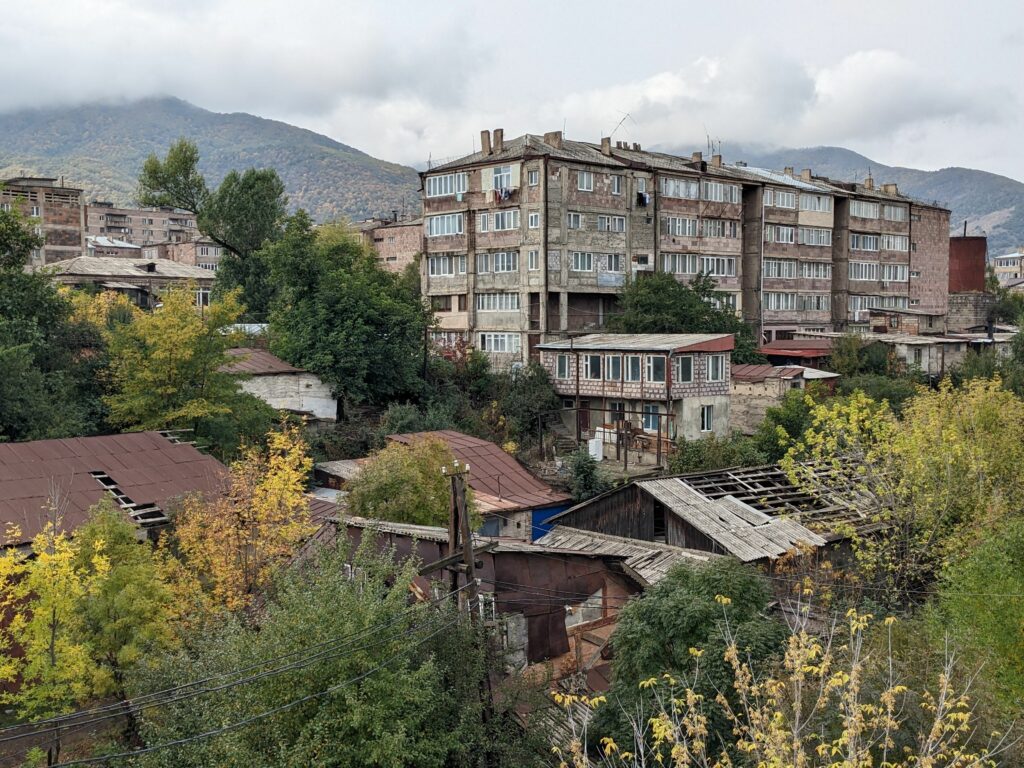
What we should have done
On a serious note, if you really are planning a similar trip, these would be our main tips:
- Consider whether you are really as stubbon as us – a taxi tour can be easily arranged and gives much more flexibility (but crucially is more carbon-intensive!) If you do want to stick to public transport like us, start as early as you can from Vanadzor
- Check what time the marshrutkas are running their return trips so that you have some certainty of timing (taxi drivers will consistently tell you there are no more marshrutkas running that day, which is rarely true, but other marshrutka drivers and fellow passengers were very helpful to us). We generally couldn’t get the actual timetables to tally up to what we’d found online, so it is worth asking
- Consider walking between the two monasteries – it is apparently a very nice 8.5 km hike and would have saved us a lot of hassle
